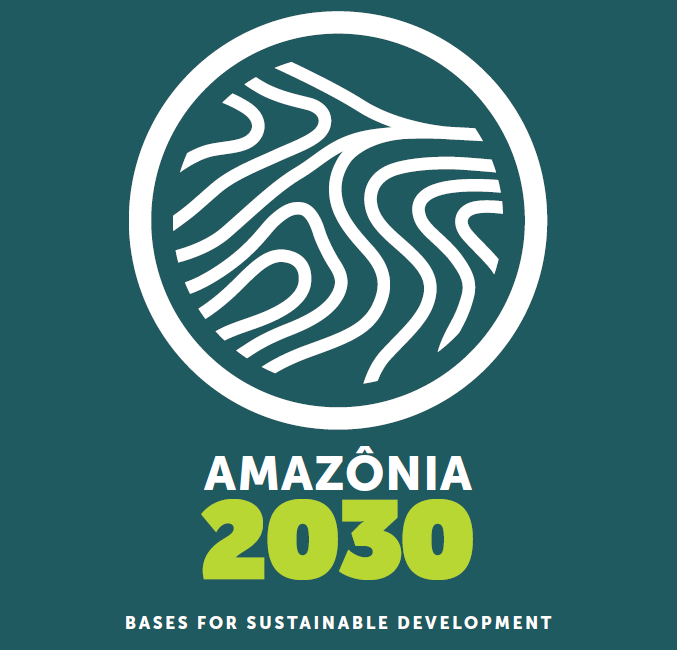

Veríssimo, Beto; Brito, Brenda; Gandour, Clarissa; Santos, Daniel; Chiaveri, Joana; Assunção, Juliano; Lima, Manuele; Barreto, Paulo; Coslovsky, Salo. Amazônia 2030: bases for sustainable development. Belém, PA: Instituto do Homem e Meio Ambiente da Amazônia, 2023.
PREFACE
The Amazon is now the first thing that comes to mind when Brazil is mentioned abroad. It has become our postcard. However, it’s not the postcard we once had with football or the beautiful and charming former capital, Rio de Janeiro. The forest, once inhabited by ancestral peoples and a natural reserve for the planet, has become an increasingly deforested space, partly occupied by illegal loggers and miners who leave behind a trail of mercury in the waters, degraded lands, and crimes. At a time when risks related to global warming are growing, what should be an asset for Brazil has turned into a shameful reputational and economic liability.
But now, after a period of darkness, the winds are turning for the Brazilian Amazon. I have been following the extraordinary Amazon 2030 project since its inception. It could not have come at a more opportune moment. The project presents a comprehensive and coherent strategy for regional development, without which there will be no chance of success.
The work is the result of the efforts of dozens of experts, organized according to the most relevant areas of social, economic, and environmental impact. This multidisciplinary emphasis is crucial. The challenges facing the Amazon go far beyond deforestation and affect the future of the 28 million inhabitants of the region. It is imperative to simultaneously improve the quality of life for people and reforest the region. Reforestation is part of the indispensable response to the challenge of climate change. Is it something achievable at a reasonable cost? Yes, as this report demonstrates, A key lesson is that there is still significant room to increase agricultural and livestock production in the region without cutting down a single tree.
It follows that the pursuit of more and better jobs necessarily involves creating urban opportunities or ones that respect the existential imperative of preservation. Clearly it has been difficult to find development paths for Brazil in areas that are connected to productive regions. Even harder is the same pursuit in spaces where the logistics are limited by preservation.
But do not despair. As presented in this report, good proposals and solutions abound.
Deforested lands offer the greatest opportunities, including sustainable forest management based on its products, restoration, productive livestock, and modern agriculture. Deforestation has already reached the 20% mark, reversing a decade-long trend of decline and accelerating, especially in the last three years. Fortunately, ecological reforestation has already shown that it can be economically viable. Natural restoration is also occurring on a larger scale than imagined, reinforcing the idea that a growing forest has value, and a standing forest, too. Mechanisms for the economic and financial viability of these activities are being developed, alongside global efforts to reach the carbon emission reduction goals set for 2050.
However, there are numerous risks and points of contention associated with these initiatives. I am struck by the fact that 29% of the Brazilian Amazon remains without defined property rights. Another extremely complicated problem is the fast growing increase in violence and organized crime in the region. Homicide statistics already far surpass the national average, with a tendency to worsen. Clearly, reinforcing the state’s presence in the region on all fronts of action will be necessary.
This report depicts the size of the challenge facing the Amazon’s future, but also demonstrates that it is possible to turn the tide. Its publication aims to contribute to an informed debate about the region, based on a strategy that deserves consideration.
Armínio Fraga
September 2023
Baixe o livro completo aqui
This post was published on 26 de fevereiro de 2024
Título Índice de Progresso Social Brasil 2025 Autores Melissa Wilm Daniel Santos Beto Veríssimo Marcelo…
Amorim, L., Ferreira, R., Dias, M., Souza Jr., C., & Veríssimo, A. Sistema de Alerta…
Título Relatório Anual do Desmatamento no Brasil - RAD2024 Autores Carolina Del Lama Julia Shimbo…
Título Fatos da Amazônia 2025 Autores Daniel Santos Manuele Lima Agatha Vilhena Beto Veríssimo Caíque…
Amorim, L., Ferreira, R., Dias, M., Souza Jr., C., & Veríssimo, A. Sistema de Alerta…
Título A Vocação da Restauração Florestal na Amazônia com Base na Vegetação Secundária Autores Jayne…